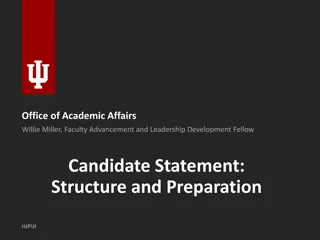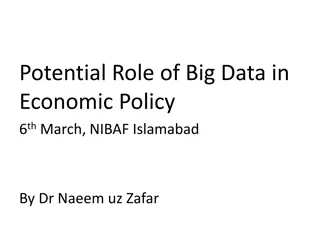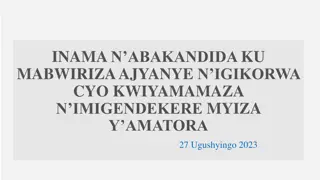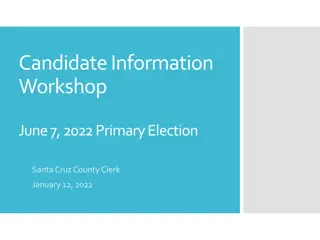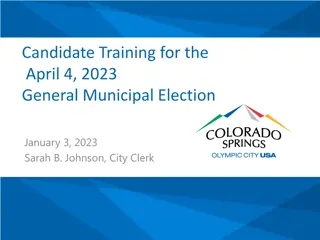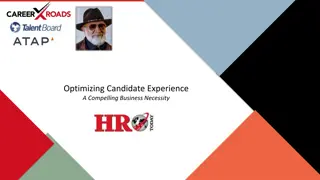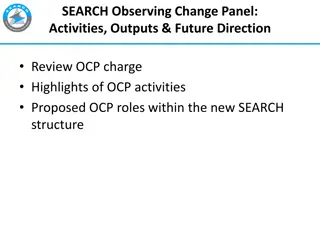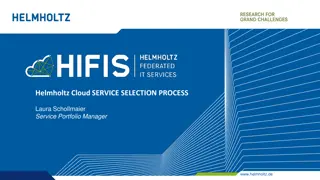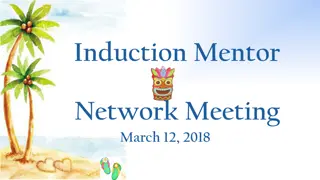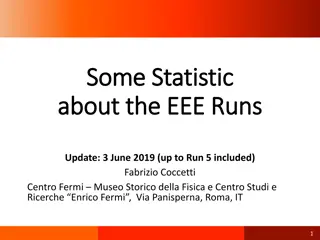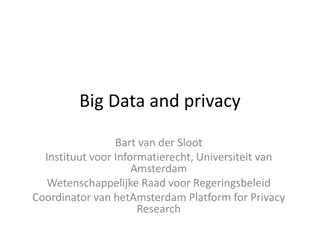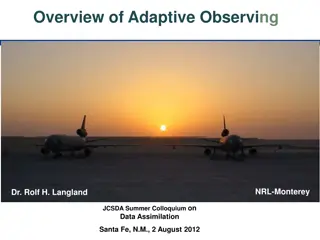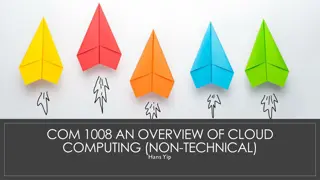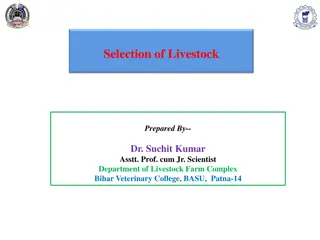Observing Run O1: The Big Picture and Event Candidate Selection
Plans for the First Observing Run (O1) in the LIGO-Virgo EM Follow-up Program involving GEO 600, LIGO Hanford, KAGRA, Virgo, LIGO Livingston, and LIGO-India. Details on data transfer, quality validation, event candidate selection, preliminary alerts, interpretation, updated information, and validation process are discussed.
Download Presentation

Please find below an Image/Link to download the presentation.
The content on the website is provided AS IS for your information and personal use only. It may not be sold, licensed, or shared on other websites without obtaining consent from the author.If you encounter any issues during the download, it is possible that the publisher has removed the file from their server.
You are allowed to download the files provided on this website for personal or commercial use, subject to the condition that they are used lawfully. All files are the property of their respective owners.
The content on the website is provided AS IS for your information and personal use only. It may not be sold, licensed, or shared on other websites without obtaining consent from the author.
E N D
Presentation Transcript
Plans for the First Observing Run (O1) Peter Shawhan for the LSC and Virgo Workshop on the LIGO-Virgo EM Follow-up Program Cascina April 23, 2015 LIGO-G1500517-v2 GOES-8 image produced by M. Jentoft-Nilsen, F. Hasler, D. Chesters (NASA/Goddard) and T. Nielsen (Univ. of Hawaii)
))) The Big Picture GEO 600 LIGO Hanford KAGRA Virgo LIGO Livingston LIGO-India Transfer data Send info to observers Data quality validation Analyze data, identify triggers, infer sky position Trigger database GW data Select event candidates Estimate background 2 Swift: NASA E/PO, Sonoma State U., Aurore Simonnet
))) Event Candidate Selection and Validation Software component: Approval Processor Preliminary identification Trigger found by low-latency CBC or Burst search Estimated FAR below some threshold Not a (non-blind) hardware injection Not already vetoed for data quality reasons Elapsed time goal: 3-5 min Preliminary VOEvent alert Data quality validation More sophisticated data quality checks (iDQ) Operators at observatories confirm there were no anomalous conditions Skymap file has been generated Retraction VOEvent notice Initial VOEvent alert 5-10 min or 3
))) How to Interpret a Preliminary Alert The Preliminary alert type is intended to help observers prepare to possibly follow up an event candidate May be useful to wake up a human or a scheduling computer For some instruments, could initiate buffering of data It should not be considered a validated GW candidate We don t know yet what fraction of Preliminary alerts will pass the validation checks and produce Initial alerts [During the LIGO/Virgo science run in 2009-10, about 1/3 were rejected at this stage] 4
))) Updated Information Initial VOEvent alert Identifying an event candidate will also launch software to do more sophisticated parameter estimation Sky position and physical parameters of the source Can require many hours (MCMC) Produces updated skymap Potentially could refine FAR estimate too One or more Update alerts Update VOEvent alert It s possible that further examination of an event candidate could discover an issue with data quality or estimation of the FAR (significance) Retraction VOEvent notice 5
))) FAR Threshold / Alert Rate for O1 We will generate alerts from CBC and Burst low-latency searches We propose to set the FAR threshold so that we expect ~1 CBC alert and ~1 Burst alert per calendar month during O1 Total of about 6 alerts expected during O1 Note: the event type and FAR is included in the alert, so you could apply a tighter cut on the alerts you receive, if you want Caveats: Estimated corrections for livetime and rate of surviving data quality checks Poisson statistics Low-latency FAR estimation could have some systematic issues Position reconstruction is a bit worse for weaker events We re saying we will generate alerts for ~6 false event candidates, plus however many real event candidates are loud enough to pass the FAR threshold too (which could be zero during O1) 6
))) Real Events vs. FAR Threshold In O1, assuming 60 Mpc ranges, realistic BNS merger rate is exact, and background model in Prospects paper (arXiv:1304.0670): 1 per 100 years ?? 12 1 per year ?? 11 1 per month ?? 10.46 With full range of possible BNS merger rates: 0.10 events selected 0.13 events selected 0.15 events selected 0.001 to 1 0.0013 to 1.3 0.0015 to 1.5 Probably Very small additive gain of real events in O1 (Despite large difference in number of false events!) Fractional gain will be more valuable in later runs Note: any 1-per-100-years event will be selected with any of these thresholds; and even with the loose 1-per-month threshold, 2/3 of real events selected will have FARs of 1-per-100-years or better 7
))) Rationale for the Loose FAR Threshold Practice! We (LIGO/Virgo) and you (EM observers) need practice Observing strategies Data analysis Really confronting the statistical issues Best to do this during the course of O1, rather than concentrating it in a short test period Time for us to make adjustments to procedures Spacing to do multi-night follow-up observing The purity will probably be very low, but at least these are the best GW event candidates we ll have so far and hey, we could get lucky You can always be more selective by making a tighter cut on FAR ~6 alerts seems like enough for every group to probably be able to follow up one or more 8
))) Pre-O1 Testing We will provide test alerts, generated at programmed times to simulate the approval process, distributed through GCN/TAN Including during our ER7 engineering run (first ~2 weeks of June) A few example VOEvents are now posted in the LV_EM wiki* at https://gw-astronomy.org/wiki/LV_EM/VOEventExamples Maybe not quite the final formatting * Anyone not yet registered for the LV-EM Forum & wiki: see https://gw-astronomy.org/wiki/LV_EM/RegistrationInstructions (this page is viewable even if you haven t yet registered) Be sure to select your project at the bottom of the web form 9
))) Blind Injections From the MOU: a small number (up to 3 blind injections per run) of simulated signals may be injected into the GW interferometer data, and may lead to GW candidate alerts. No LIGO and VIRGO members (aside from the few people entrusted to carry out the program in secrecy) or <partner group> members will know that those events are not of astrophysical origin until after they have been fully vetted by LIGO and VIRGO. Won t be un-blinded until the result/preprint is ready to be made public The LIGO-Virgo blind injection committee has stated that they intend to do this at a rate comparable to astrophysical expectations . For O1, that means: There could very well be no detectable blind injection Chance of having >1 detectable blind injection is probably extremely small In any case, the blind injection program will end when the first GW event is published 10
))) General LIGO/Virgo Criteria for Interpreting and Publishing Events 1. Above ~5 sigma (false prob ?? ?): detection paper Unlikely (but possible!) that we will get a golden event like this in O1 2. Above 3 sigma (false prob ?.???): evidence paper For O1, corresponds to FAR ~ 1 in 100 years 3. Above 2 sigma: describe as outlier in end-of-run upper limits paper, but inconclusive evidence In this case, a reasonably significant EM counterpart (false coinc prob 0.05) could make this scientifically more interesting, and worth publishing a joint paper 4. Loudest trigger is consistent with background: just describe briefly in upper-limit paper Unlikely that an apparent EM counterpart could make this interesting, unless it s a short GRB or otherwise exceptionally distinctive (would need convincing demonstration) 11
))) Reminder of Publication Constraints From the MOU: Any apparent counterpart to the GW event candidate, that was identified due to the GW candidate alert, is strictly embargoed: it may not be published or presented prior to the public announcement or publication of the GW event candidate by LIGO and VIRGO. LIGO and VIRGO will share detailed information with all partners who observed the counterpart prior to publishing or presenting the GW event results. The embargo is important to LIGO/Virgo We need to be the ones to present the GW data, after careful vetting We will keep you updated on any findings as we check a candidate Baseline plan is that LIGO/Virgo will publish GW event candidates according to their significance based on the GW data alone Follow-up observations will then add to the story Frees us from trying to write huge joint papers unless it s really necessary to establish the reality of an event in the first place We ll be happy to share drafts and coordinate with companion papers Normal co-authorship/acknowledgment etiquette if any unpublished proprietary information is used in a paper 12
))) More About Publications LIGO+Virgo intend to publish something routinely reporting all alerts sent out during O1, even if consistent with background Lifts the embargo, so you can refer to that information and write concretely about your follow-up observing attempts, if you want Timeline: aiming (optimistically?) for 3 months after the run ends We urge due caution when considering whether an EM transient is really likely to be a true counterpart Statistical significance of any apparent counterpart needs to be carefully evaluated in light of the large GW sky regions and background population of EM transients Especially for the first detection of GW signals, observation of a new signature calls for convincing evidence Recall that no restrictions are intended on the publication of EM transients which were not triggered by a GW alert But you can t hint that there was a GW counterpart (even if we know there is one!!!), if the embargo is still in effect 13
))) Any questions or comments? 14
))) Some Questions for Discussion Does follow-up strategy need something more than FAR and sky map? Will your observing strategy depend on CBC vs Burst? Other parameters? Could/should we skip the human validation step before issuing Initial alerts? Would still have the ability to retract later if humans find some anomaly Do you expect to coordinate with other observers? If so, how? Are other EM observations useful (or essential) for planning yours? How will you evaluate the significance (i.e., low chance of false coincidence) if you find an apparent counterpart? And how low of a false coincidence probability could to demonstrate with your specific instrument(s) and analysis? Any specific suggestions or requests for testing? 15
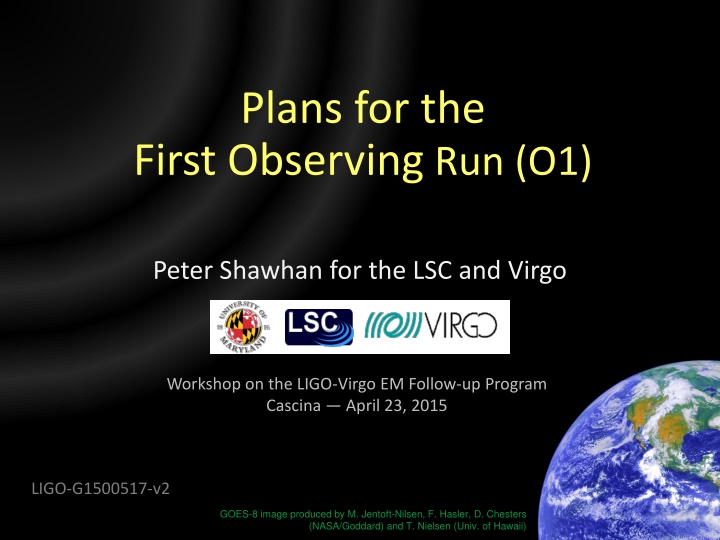

![[PDF⚡READ❤ONLINE] Solar Surveyors: Observing the Sun from Space (Springer Praxis](/thumb/21536/pdf-read-online-solar-surveyors-observing-the-sun-from-space-springer-praxis.jpg)

